The Shofar Sounded on Rooftop in Jerusalem - Must Listen Until The End (Isaiah 27) Please share
Yehuda Lave is an author, journalist, psychologist, rabbi, spiritual teacher, and coach, with degrees in business, psychology and Jewish Law. He works with people from all walks of life and helps them in their search for greater happiness, meaning, business advice on saving money, and spiritual engagement. Now also a Blogger on the Times of Israel. Look for my column
Love Yehuda Lave
I am involved With Rabbi Yehuda Glick and Robert Weinger of Shofar so Great on the making of the attached video.
It is fitting that we are reading these words now, when the Jewish world is abuzz over what coronavirus means in the grand scheme of things, and whether, perhaps, it is a sign of Mashiach's coming. Jewish social media is full of posts and reposts affirming that coronavirus is absolutely a sign of Mashiach's arrival, with all kinds of "proofs" based on gematria and ancient prophecies.
Many of the posts cite the same verse, Isaiah 26:20: "Go, my people, enter your chambers, and lock your doors behind you. Hide but a little moment, until the fury passes." This verse is indeed a prophecy for the End of Days. The preceding verse speaks of the Resurrection of the Dead ("Your dead shall live, dead bodies shall arise; those that dwell in the dust will awake and sing…") while the verse that follows describes God's final retribution: "Behold, God shall come forth from His place to punish the dwellers of the earth for their iniquity…" Having said that, it isn't only sinners that perish. On the contrary, Isaiah cautions everyone to hide behind closed doors for, as the Sages teach, in such moments the angel of death is let loose and doesn't differentiate between the righteous and the wicked.
Now, what exactly is the nature of the za'am (זעם), "fury", that Isaiah speaks of? Is it really a virulent plague?
A Plague Before Mashiach In several places, the Sages speak of a great plague that will befall the world before Mashiach comes
A similar statement is found in the Midrash (Shir HaShirim Rabbah 2:13):
"The fig tree puts forth her green figs…" (Song of Songs 2:13) Said Rabbi Chiya bar Abba: before the days of the messiah, a great plague will come to the world, and the sinners will succumb to it "…and the vines in blossom give forth their fragrance…" (ibid.) These are the survivors, of whom it is said: "And it shall be, that he that is left in Zion, and he that remains in Jerusalem [shall be called holy…]" (Isaiah 4:3)
Such passages agree that a devastating plague will come upon the world at the End of Days to strike down idolaters and sinners (though even the righteous will suffer among them). It is interesting to point out how the coronavirus we are dealing with today has, strangely, left the vast majority of children unaffected, with mild symptoms, or none at all. Scientists have yet to find a good explanation for this baffling phenomenon. Perhaps, from a spiritual perspective, it is because innocent children cannot be categorized as "sinners" or "idolaters", and are being spared.
The Midrash Rabbah quoted above goes on to cite a couple of passages that also appear in the Talmud about the final seven-year period before Mashiach comes, and the state of the world during that time.
It suffices to say that much of what the Sages predicted has come true. The final sign given in the lengthy midrashic passage is that if you see a generation where people are growing bolder and bolder, love to "rant and rave", where blasphemy is widespread and people constantly "taunt" God, you should expect Mashiach to be near.
This is one of the factors that distinguish between the current state of the world compared to previous global plagues. For example, the Spanish Flu that started in 1918 certainly qualifies as a great plague that engulfed the entire world, with an estimated 50 million deaths. It came at the same time as World War I, and there were certainly Jews then who expected Mashiach imminently. The critical difference between then and now is the set of prophecies in the Talmud, which are more descriptive of today's world than, say, 1918, as well as the fact that today we have the State of Israel. The latter is especially significant, since Ezekiel (ch. 37-38) prophesied that Jews would first return to Israel, settle down and build a prosperous country, and only then Mashiach would come. Thus, it is only today that essentially all the prophecies have been fulfilled.
Rosh Hashanah and the Coming of Mashiach
Today is Rosh Hodesh Elul, which will be 30 days until we usher in the holiday of Rosh Hashanah and welcome the 5781th year according to the Jewish calendar. This day commemorates the birth of Adam, and his judgement on the very same day. Among other events, it also marks the Akedah – the "Binding of Isaac" on Mt. Moriah. Of course, the Torah does not mention any of this explicitly, and does not even mention the term "Rosh Hashanah". The plain text of the Torah only tells us that the first day of the seventh month should be a "memorial" day, and a time to hear the shofar's blast.
In discussing the mitzvah of the shofar, the Talmud (Rosh Hashanah 33b) compares the sound of this instrument to the weeping of Sisera's mother. Sisera was the powerful general of King Yavin of Chatzor. The fourth chapter of Judges tells us that Sisera oppressed the Israelites for twenty years with his mighty army of 900 iron chariots. Finally, the judge and prophetess Deborah summoned Barak to raise an Israelite army of ten thousand. With God's help, the Israelites finally defeated Sisera and his forces until "there was not a man left". Sisera himself escaped and hid in the tent of a woman named Yael, who promptly killed him with a tent-peg while he was asleep.
Following the victory, Deborah and Barak sang a special song full of cryptic verses and prophecies. The song ends by describing how Sisera's mother eagerly awaits the return of her son from battle. When he fails to arrive, she weeps by her window. People try to comfort her, to no avail. The song ends quite abruptly at this point, and states that all of God's enemies will ultimately perish.
Why did the Sages compare the sound of the shofar to the weeping of Sisera's mother? Further still, the commentaries on the Talmud relate that Sisera's mother cried 100 times, and for this reason we blow the shofar 100 times! Others have pointed out that the account of Sisera's mother in the Book of Judges has exactly 101 letters, which is why many communities blow the shofar an additional, 101st time.
Some understand this shofar-blowing as counteracting the cries of Sisera's mother. Sisera was a very wicked man, and it appears his mother was no different, hoping that her son was late from battle because he was delighting in the spoils of war (Judges 5:30). A more positive way of looking at it is that a mother loves her child regardless of how wicked that child may turn out. We hope that God – our Heavenly parent – also continues to love us despite our faulty ways. We blow the shofar 100 times to imitate Sisera's mother in the hopes of stirring some divine mercy.
Sisera and Rabbi Akiva The Tanach uses two different words for the "window" by which Sisera's mother cries: first she looks out a chalon, and then through ha'eshnav. The first refers to her looking out a literal window and seeing that her son is not returning. The second refers to her glimpsing into the future – with some Midrashic sources suggesting the eshnav was some kind of fortune-telling tool that Sisera's mother was proficient in. What did she see when she looked into the future?
According to the Talmud (Sanhedrin 96b), the descendants of Sisera "studied Torah in Jerusalem". Who was Sisera's primary descendent? None other than Rabbi Akiva himself, the greatest of Talmudic sages! Sisera's mother saw that not only will her son fall in battle and be killed, but his descendants will become part of the very nation he sought to destroy!
In that case, perhaps we blow the shofar to mimic Sisera's mother as a request for divine protection in the new year, a plea for the enemies of the Jewish people to have the same fate as Sisera and his descendants. Indeed, blowing the shofar 101 times also corresponds to the gematria of Michael (מיכאל) – the guardian angel of Israel.
Rebuilding the Temple Some suggest that Sisera's mother peered even further into the future. The gematria of ha'eshnav (האשנב) is 358, equal to Mashiach (משיח). Sisera's mother gazed far enough to see that at the very end of days, her Israelite enemies will be restored to their Promised Land, and live there in peace and glory.
Maybe we blow the shofar to remind us of this as well, in the hopes of getting our very own glimpse of the future. According to Jewish tradition, the arrival of Mashiach will be signaled by a tremendous shofar blast heard around the world (Isaiah 27:13). And Mashiach's coming is associated with a "Judgement Day", too, when all souls past and present will be judged for the final time. This ties right into the spirit of Rosh Hashanah, with two of its major themes being the shofar and judgement.
Interestingly, the gematria of Rosh Hashanah (ראש השנה) is 861, equivalent with Beit HaMikdash (בית המקדש), the Holy Temple, the rebuilding of which we await upon Mashiach's arrival. In fact, there is just one place in the entire Tanach where the term "Rosh Hashanah" is mentioned. This is at the start of the fortieth chapter of Ezekiel, where the prophet receives a vision of the future Temple, and records all of its dimensions. This passage follows Ezekiel's doomsday prophecies of Gog u'Magog, describing the travails surrounding the coming of Mashiach.
Don't Forget the Ice Cream Morty and Miriam Rosenberg , an elderly couple living in a Florida retirement community were watching television one evening. Miriam said, "I am going to get a dish of ice cream now." Kindly, Morty offered to get the ice cream for his wife. "I'll write it down so you don't forget," Miriam said.
"I won't forget," the Morty said.
"But I want chocolate syrup and nuts on it, so I'll write it down," Miriam replied.
"I will get you the ice cream. Don't you worry," Morty replied.
A few minutes later, Morty returned with gefilte fish and herring. Miriam said, "See, I should have written it down because you forgot the kugel."
The Democrats' 2020 Platform Resurrects Obama's Hostility to Israel and Appeasement of Iran 08/04/2020 0
AP _ _ _
By Carol S. Greenwald
Democrats' crowing that their 2020 platform on Israel is a victory for the moderates is disingenuous. The Democrat party's 2020 platform is not pro-Israel. It is pro-Iran.
The Democrat party's platform promises to return to the Iran nuclear deal and rejects regime change "as the goal of U.S. policy toward Iran." The opening statement of the platform stresses:
"Democrats will call off the Trump Administration's race to war with Iran and prioritize nuclear diplomacy, de-escalation and regional dialogue. Democrats believe the United States should not impose regime change on other countries and reject that as the goal of U.S policy towards Iran."
Translation: Obama's appeasement of Iran's nuclear and regional ambitions is back.
A nuclear Iran is an existential threat to Israel. The Obama/Biden administration handed $150 billion to the Iranian mullahs, which financed both Iran's nuclear program and its financing of global terrorism. This money propped up a regime that had been facing strong internal opposition. Biden's campaign promise to return to the Iran nuclear deal on Day One is memorialized in the Democrats' platform. They will undo President Trump's stringent sanctions which are destroying the economic base of the Iranian regime. This one action alone undermines all the Democrats' assurances about support for a "strong, secure, democratic Israel."
A nuclear Iran by definition makes Israel insecure.
The platform does not guarantee that Israel will remain a Jewish state. The language in the platform before 2012 made clear that there was no Palestinian right of return to Israel. Removing the explicit language that Palestinians have a right to resettle is creating another existential threat to Israel.
The Democrats' platform promises to oppose any effort "to unfairly single out and delegitimize Israel." Who is going to define "unfairly?" According to Democrats, BDS is not unfairly singling out Israel; it is protected free speech.
The Democrat platform's opposition to settlement expansion will lead to the same endless criticism of Israel that marked the Obama/Biden administration. What is settlement expansion? Is it adding bathrooms to existing structures, as Obama/ Biden insisted? Memorably, Biden threw a temper tantrum when Israeli authorities had the temerity to announce an advance in a stage towards building permits for homes in a Jerusalem neighborhood while Biden was in town. With that outburst, Biden has signaled just how shaky his pledge is to keep Jerusalem as the capital of Israel. The platform never reveals its definition of Jerusalem's boundaries.
And while the document affirms Biden's statements that Jerusalem is the capital of Israel and that he would not move the embassy back to Tel Aviv, Biden has also said that he would open a consulate in eastern Jerusalem for the Arab Palestinians. So are the Democrats creating a new entity of East Jerusalem? So much for the denunciation in the Democrats' platform of unilateral steps, which apparently only refer to ones taken by Israel.
The Democrats' party platform, with its firm opposition to Israel extending sovereignty to Jewish communities, also leaves the Palestinian Authority with no incentive to negotiate with Israel. No, with this platform, everything reverts back to the PA simply waiting for the inevitable appeasement by a Democrat administration and pressuring of Israel to make still more concessions just to bring the PA "back to the table."
While the Democrats' platform does not tie U.S. military aid to Israel renouncing its sovereignty in areas beyond the 1949 Armistice Lines, Senator Van Hollen (D-MD) led an effort joined by 19 Democrat senators to block U.S. military aid if Israel uses it to "annex territory." Well, that sure sounds like the Democrats are gearing up to tie military aid to controlling Israel's internal decisions.
The Democrats' 2020 platform is a return to the Obama policy of appeasement to Iran's nuclear ambitions and to Iran's plans for regional hegemony. According to former Israeli Ambassador to the U.S., Michael Oren, "The Biden/Obama administration deliberately damaged the relationship between the United States and Israel."
So the Democrats' claim that the 2020 Platform reveals that the Progressive wing of the Democratic party was shut down was greatly exaggerated. (AmericanThinker.com)
Carol S. Greenwald is Chairman of Jews Choose Trump
Open Restaurants" Program Saves Jobs, but Problems Persist with Outdoor Dining 08/03/2020 0
AP _ _ _
Jared Evan
On Monday Mayor Bill de Blasio announced that 9,000 restaurants are taking part in the city's Open Restaurants Program that allows them to offer outdoor dining.
The city estimates it has saved some 80,000 jobs with the program, ABC News reported.
However, problems still persist.
The NY Post reported: One of the city's priciest restaurants is taking up too much sidewalk space and exposing pedestrians to maskless outdoor diners on Central Park South, local residents charge.
The restaurant, Marea, a Michelin-starred Italian seafood restaurant, is raising the ire of local residents:
On the sidewalk, Marea's 11 tables are set up under scaffolding "effectively cutting the sidewalk in half," said a longtime Central Park South resident in a July 16 letter to the restaurant's management and reported and verified by the NY Post.
"It turns the thoroughfare into a cramped passage that has forced pedestrians to dodge waitstaff, move out from under the scaffolding onto a narrow strip by the curb or fully on to the street (into a bus stop)," the letter writer griped. "There is barely room for two pedestrians walking in opposite directions to pass each other and all this while far fewer than 6 feet separate anyone, let alone unmasked restaurant patrons."
"I understand the need for restaurants to open and I totally support that, but this is just totally unacceptable," said one pedestrian who did not want to be named , told the NY Post "It's really outrageous that a lot of the elderly residents who live around here now have to cross the street in order to be 6 feet away from diners who are not wearing masks. If you are trying to walk by the restaurant, you are just inches from them."
Mayor de Blasio announced on Monday that the program would return on June 1, 2021 to further help restaurants in New York City, and perhaps sooner should conditions allow. The Open Restaurant Program allows restaurants to promote open space, enhance social distancing during the pandemic, and earn money and keep people employed, ABC News reported.
ABC explained how the program works for businesses:
The city offers two options for temporary expanded outdoor dining:
TJV recently reported on other issues related to the outdoor dining program: The NY Post recently interviewed Fahiyan Ahmed, who operates the family owned LIC Grill in Long Island City.
Ahmed told the Post: "On the first day, I set up two tables outside for a test run. We got two customers that sat down, but then they came in said, 'We've got to take the food to go,' said Ahmed, 29.
"There was crack smoke blowing in their face, marijuana smoke, K2 smoke. There were people coming up to them asking for money. There were drug dealers yelling at their runners. There were gang signs being thrown left and right."
Even worse, Ahmed said, "Two homeless guys sat down at one of our tables"
"I told them the seating was just for customers, but they didn't want to move," he said.
Donald Trump: Coronavirus Lockdowns 'Do Not Prevent Infection in the Future'
AP _ _ _
CHARLIE SPIERING (Breitbart)
President Donald Trump on Monday repeated that a the strategy of a long time or permanent lockdown was never an option to defeat the coronavirus entirely.
"It's important that all Americans recognize that a permanent lockdown is not a viable path toward producing the result that you want, or certainly not a viable path forward," Trump said.
The president spoke about lockdowns during a press conference at the White House, saying that long term lockdowns would inflict more harm then good in the country.
He cited other foreign countries such as Spain, Germany, France, Australia, Hong Kong, and Japan, who were also experiencing spikes in coronavirus cases as an example, despite their own efforts at lockdowns.
"Lockdowns do not prevent infection in the future. They just don't," Trump said. "It comes back many times. It comes back."
The president said the purpose of a medical lockdown was to buy time to build hospital capacity, to stockpile medical equipment, and study the virus for treatment – something he said the United States had already done.
Trump said that it was time to move Americans to reopen the economy and schools to keep the country running.
"We must focus on protecting those at highest risk while allowing younger and healthier Americans to resume work and school with careful precautions," Trump said.
The president said that vaccines and treatments for the virus were moving forward.
He said the government distributed 2,979 cases of Remdesivir, a drug developed to treat the virus, to hotspot states including California, Ohio, Arizona, and Georgia.
The president noted that positive cases had declined by nearly six percent from the previous week, calling it an "encouraging sign."
"The virus is receding in hot spots across the South and West," he said. "We have seen slow improvements."
The president warned of other flareups in Georgia, Mississippi, Tennessee, Oklahoma, and Missouri.
Trump said that all Americans should continue taking precautions to slow the spread of the virus.
"I urge all Americans to continue to socially distance, wash your hands, wear a mask when you cannot avoid crowded places, and to protect the elderly," he said.
BREAKING NEWS: Dead Sea Scrolls DNA study reveals Bible was changing 2,000 years ago * Textual differences found in Jeremiah * Technique may help solve fragment 'jigsaws
Pioneering DNA study reveals not all Dead Sea Scrolls are from Dead Sea Breakthrough paleogenomic analysis of ancient parchment helps prove textual evolution in 2 versions of Book of Jeremiah in 2nd Temple era By AMANDA BORSCHEL-DAN
A seven-year interdisciplinary study of ancient animal DNA taken from 2,000-year-old Dead Sea Scroll fragments has provided researchers with new and surprising insight into the Jews and their theology on the cusp of the fall of the Second Temple.
The breakthrough study reveals that the various scrolls from which the fragments come were written in different locations along the Dead Sea and, in some cases, even far away from it. This new theory is based on new evidence that part of the Dead Sea Scrolls corpus was written on calfskin, which would not have been available in the Judean Desert, say the researchers. Previously, researchers had presumed the parchment was made from goats, which thrive in the desert climate.
The pioneering new DNA methodology may also now enable researchers to group together some of the thousands of disparate scroll fragments that experts have for decades been unable to match, enabling potential reconstruction of more of the ancient texts.
Among the discoveries is that two fragments from the Book of Jeremiah reflect differing versions of the book, which themselves also stray from the biblical text as it is known today. "The ancient DNA proves that two copies of Jeremiah, textually different from each other, were brought from outside the Judean Desert," said Tel Aviv University Biblical Studies Prof. Noam Mizrahi.
The unprecedented "paleogenomic" study of ancient DNA from the Dead Sea Scrolls — the oldest biblical manuscripts yet discovered — provides each parchment's animal source with a unique DNA fingerprint.
Tracing the origins of these animal skins provides a new window into the geographical and chronological development of the biblical canon, and gives insight into whether the scrolls reflect the narrow, extremist worldview that characterized the Jewish sects at Qumran, or whether they were a library of texts collected from the broader Jewish community.
"For me, as philologist who has conducted many years of research on the texts inscribed on the scrolls — studying their content, language, scribal features — I was amazed to see how much information can be gleaned by analyzing the biological material from which the scrolls are made," Mizrahi told The Times of Israel this week.
I was amazed to see how much information can be gleaned by analyzing the biological material from which the scrolls are made
The Dead Sea Scrolls are a library of theological and legal writings from the third century BCE to first century CE that were found starting from 1947 through the 1960s. The fragile scrolls and fragments were largely found in 11 caves surrounding the ancient site of Qumran, on the northern tip of the Dead Sea in the Judean Desert. In sum they create a corpus of some 25,000 fragments that make up 1,000 manuscripts. Other scroll sites include more southern Dead Sea locations, such as Wadi Murabba'at, Naḥal Tze'elim, Naḥal Ḥever, and Masada.
"Imagine that Israel is destroyed to the ground, and only one library survives – the library of an isolated, 'extremist' sect: What could we deduce, if anything, from this library about greater Israel?" said Tel Aviv University's Prof. Oded Rechavi in a press release. "To distinguish between scrolls particular to this sect and other scrolls reflecting a more widespread distribution, we sequenced ancient DNA extracted from the animal skins on which some of the manuscripts were inscribed."
One of the insights gained from the study is that, through identifying the different herds of animals used in making the scrolls' parchment, researchers now know that they were likely written at differing locations along the Dead Sea — and even far from it.
I was surprised how much can be learned from the species identification alone about the circulation of the scrolls, their importance (that they represent the broader cultural milieu of Israel, not just an extremist sect)," Rechavi wrote The Times of Israel in an email.
The unique ancient DNA fingerprint may also grant researchers the ability to group together some of the many thousands of tiny puzzle-piece fragments that have largely been sitting for the past 70-odd years in the cigar boxes they were placed in by the original scholars in the 1950s. Some of these fragments, newly read by IAA scholars with hi-tech imaging, only contain a word or two of Second Temple Hebrew. However, if their DNA fingerprints match other, larger pieces, new channels of inquiry could be opened.
"Our research enabled us to shed new light on many old mysteries basically by allowing the materiality of the scrolls to speak for its own right — and it has surprisingly a lot to tell us," said Mizrahi.
The noninvasive DNA mapping and analysis was completed by a joint international team of life scientists, philologists and archaeologists. The resultant study is published as the June cover story of the prestigious peer-reviewed Cell academic journal. The research team was led by Tel Aviv University's Rechavi of the George S. Wise Faculty of Life Sciences, and Biblical Studies Prof. Mizrahi. Collaborators include Uppsala University in Sweden's Prof. Mattias Jakobsson, the Israel Antiquities Authority's Pnina Shor and Beatriz Riestra, TAU's George S. Wise Faculty of Life Sciences Prof. Dorothee Huchon-Pupko and Cornell Medicine Prof. Christopher E. Mason.
Herding the information Rechavi, it appears, had no preconceived notion that his new "paleogenomic approach" to the Dead Sea Scrolls would work. In the Cell paper, "Illuminating Genetic Mysteries of the Dead Sea Scrolls," the authors explain that to compare and contrast the DNA with modern livestock, they "generated genomic sequence data from 35 ancient and four modern specimens, as well as mitochondrial capture data from 3 pieces of ancient scroll fragments."
"It is remarkable that we were able to retrieve enough authentic ancient animal DNA from some of these 2,000 year old fragments considering the tough history of the animal hides," Rechavi, whose lab developed the scientific methodologies used in the study, told The Times of Israel in an email this week. "They were processed into parchment, used in a rough environment, left for two millennia, and then finally handled by humans again when they were rediscovered."
The pioneering study was seven years in the making, said Rechavi, for a variety of reasons — including the fact that its ideas and methods were relatively untried. But for Rechavi, whose lab's website proclaims it is a "Laboratory for radical science," that was no barrier.
"When Noam and I met for the first time and started thinking about this, it sounded like a crazy idea, and therefore it took a while for us to actually do something about it. Then we had to convince the IAA that it's a good idea and proved that we can extract DNA from tiny amounts of materials," Rechavi explained.
When Noam and I met for the first time and started thinking about this, it sounded like a crazy idea
The rest of the study's academic team was assembled through a sequence of chance meetings — leading ancient DNA expert Jakobsson at a talk in Sweden, and at a different talk, Cornell's Mason, who studied bacterial contaminations of the DNA processing in New York. "Then we established a collaboration with Dorothee Hochon-Pupko, which was crucial for the identification of the animals," he said. He also credited his lab's team "for developing all the tools that we needed. It takes a long time!"
The IAA's Shor said she welcomed the new Tel Aviv University collaboration, which "joins the innovative toolbox of Dead Sea scrolls studies. We attempt to integrate present scientific and technological advances minimizing intervention while enhancing physical and textual research on the scrolls."
The Israel Antiquities Authority is the custodian of some 99 percent of all uncovered Dead Sea Scrolls fragments, according to head of the Dead Sea Scrolls unit Pnina Shor. Due to the extremely delicate condition of the fragments — considered an international heritage treasure — until now most parchment studies have been too invasive for the IAA to permit on a wide scale.
Rechavi and his lab, however, devised means in which even "dust" taken from tape attached to scrolls or delicate scrapings from their unwritten backsides could yield 2,000-year-old animal DNA.
"When it was possible, the conservators from the Israel Antiquities Authorities (IAA) cut off tiny fragments for us to analyze. In other cases, when we examined fragments that are too sensitive to cut, we had to sequence 'dust' that fell off or scraped off the uninscribed side of the piece. In these later cases, the sampling did minimal or almost no damage. However, any handling of the scrolls, even just letting us look at them, holds certain risk," Rechavi told The Times of Israel.
The ancient DNA study gives an unexpected answer in the ongoing debate over which breed of kosher animals had their hides used for parchment — mostly sheep, not goats as previously thought.
Shifting Second Temple-era canon According to the IAA's Shor, the Dead Sea Scrolls corpus includes every book of the Hebrew Bible, barring the Book of Esther, but they are not necessarily written exactly as we read them today. The study's look at two puzzling fragments from the Book of Jeremiah illuminate the canonical discrepancies further.
"Two samples were discovered to be made of cow hide, and these happen to belong to two different fragments taken from the Book of Jeremiah. In the past, one of the cow skin-made fragments was thought to belong to the same scroll as another fragment that we found to be made of sheep skin. The mismatch now officially disproves this theory," said Rechavi in the press release.
"What's more: Cow husbandry requires grass and water, so it is very likely that cow hide was not processed in the desert but was brought to the Qumran caves from another place. This finding bears crucial significance, because the cow hide fragments came from two different copies of the Book of Jeremiah, reflecting different versions of the book, which stray from the biblical text as we know it today," said Rechavi.
Asked how we can be certain that the cow parchment wasn't imported to the Qumran area and prepared there, Mizrahi said, "It's always an issue of probabilities. First, we have no evidence for the transportation of blank scrolls from one part of the country to the other, and it seems difficult to understand why would someone go into such a venture that renders the material much more expensive when locally-produced hides would have been easily available close to home.
"Second, in the case of Jeremiah, there are converging lines of evidence suggesting that the cow-made scrolls were not written at the site. Both of them are paleographically too old for that — [fragment] 4Q70 is dated to the late 3rd century BCE, while 4Q72b is dated to the 2nd century BCE, i.e., before the sectarian settlement at Qumran (now usually dated to ~100 BCE through 68 CE)," he clarified in an email.
According to the Cell article, fragment 4Q70 "is textually distinct because it preserves an intermediate compositional stage." An original, brief text was "corrected" by a later scribe in a margin note. "The additional paragraph (Jeremiah 7:30–8:3) amplifies the prophetic admonition and has become part of the longer, received version. Tellingly, long before discovery of the DSSs, critical scholars have argued, on literary grounds, that this paragraph is not well integrated into its present context," write the authors.
Long before discovery of the DSSs, critical scholars have argued, on literary grounds, that this paragraph is not well integrated into its present context
Within the additional apocalyptic, now canonized, paragraphs, Jeremiah rails against idolaters, stating, "For the people of Judah have done what displeases Me — declares the LORD. They have set up their abominations in the House which is called by My name, and they have defiled it… And I will silence in the towns of Judah and the streets of Jerusalem the sound of mirth and gladness, the voice of bridegroom and bride. For the whole land shall fall to ruin…"
Bible scholar Mizrahi speaks about "textual 'pluriformity'" — different versions of the same book, found within the same cave. As opposed to the anchored, unchanging biblical text Jews across the world encounter today, through the different readings of Jeremiah, he hypothesized that during the Second Temple period, the Jews' emphasis was on the interpretation of the text, rather than the exact wordage.
"The ancient DNA proves that two copies of Jeremiah, textually different from each other, were brought from outside the Judean Desert. This fact suggests that the concept of scriptural authority – emanating from the perception of biblical texts as a record of the Divine Word – was different in this period from that which dominated after the destruction of the Second Temple," said Mizrahi in the press release.
"In the formative age of classical Judaism and nascent Christianity, the polemic between Jewish sects and movements was focused on the 'correct' interpretation of the text, not its wording or exact linguistic form."
Asked if this idea of multiple interpretations can be used to understand the versions of scriptural stories found in the Christian New Testament, Mizrahi said, "Nascent Christianity began its life as a Jewish movement, so no wonder that there are many parallels between the scrolls and the New Testament, though one should not underestimate the differences as well.
"When it comes to scriptural interpretation there some striking parallels with regard to the hermeneutics (namely, the concepts of the interpretive method) as well as the selection of interpreted texts and even certain exegetical motifs. Finally, both the Dead Sea Scrolls and the New Testament stem from the same cultural world, in which apocalyptic thinking and literature were driving forces with formidable impact on all aspects of cultural productivity," said Mizrahi.
New technique to detect forgeries? The lure of the Dead Sea Scrolls for Jews and Christians alike has led to a recent proliferation of forgeries on the market. Most notably, the Museum of the Bible in Washington, DC, announced in March that its entire collection of so-called Dead Sea Scroll fragments were all frauds.
Colette Loll, the founder/director of Art Fraud Insights, conducted the final in-depth study that concluded that the multi-million dollar fragments were forgeries. According to its website , Loll's firm is "a consultancy dedicated to art-fraud related prevention initiatives, exhibitions, lectures, training and specialized investigations."
In many cases, the Museum of the Bible's fragments were written by modern forgers on ancient parchment, presumably blank, which appears to be from scroll caches that weren't originally deemed valuable enough for the antiquities market. In her multi-disciplinary report , in addition to epigraphical discrepancies, Loll used molecular, elemental and chemical analysis.
Asked by The Times of Israel if the new Tel Aviv study will influence her future work, Loll said, "Certainly any methodology which helps us to further characterize the writing surface, or substrate, of the fragments in question would be interesting to consider. I suppose cost and access to any questioned fragments would be the obvious considerations. I would be more than happy to discuss a possible collaboration with Tel Aviv as we have a large, and growing, dataset of questioned fragments under review."
Other scholars of ancient texts are likewise pushing for a wider dataset for the Dead Sea Scroll fragments.
"The organized accumulation of this kind of data is a very welcome development for all of us who work on ancient manuscripts," wrote Brent Nongbri in a recent post on his Variant Readings blog . "Of course, as forgers grow in sophistication, a database like this could become an asset for producers of forgeries, a kind of guide book for making more convincing fakes. But this is the nature of the symbiotic relationship between forgers and scholars: As forgers produce more advanced products, scholars must respond with even more exacting examinations of unprovenanced pieces (if they wish to use unprovenanced materials at all, a question that is looming on the horizon for all students of ancient manuscripts)."
Rechavi said that he is not yet certain if the techniques developed in the Cell study could also be used to authenticate (or not) unprovenanced DSS scroll fragments.
"In theory this could be possible, but we'll have to try and see. We found that Qumran scrolls can be distinguished from scrolls there were brought from the outside… it perhaps depends where the blank parchments originated," said Rechavi.
But biblical scholar Mizrahi was adamant that this wasn't — and shouldn't be — the goal of future work.
"Our goal was to study the authentic fragments, not identify any forgeries." He said that in principle, due to the differences in the genetic signature of scrolls coming from different sites, "one might be able to utilize this kind of information for ruling out a connection between Qumran (or other ancient sites) and a given unprovenanced fragment." Forgeries written on authentic but blank fragments would not be detected, however.
"We should bear in mind, though, that the number of forgeries is relatively small (roughly around 100 fragments), whereas the authentic fragments run to some 25,000 (!)," wrote Mizrahi in an email. "In my view, it is better to focus the energy on the real stuff rather being distracted by background noise."
Don't Judge a Book… Joe had just recently become Orthodox and was looking to get married so he went to his friend Mike was who trying to become a part time shadchan – matchmaker. Joe was a little worried about this whole blind date business especially the idea of going out with someone he'd never seen before. "What do I do if I don't find her attractive in the slightest?" says Joe. "I'll be stuck with her all evening."
"Don't worry," Mike says, "just go up to her door and meet her first. If you really can't stand the way she looks just shout 'Aaaaaauuuggghhh!' and fake an asthma attack."
So that night, Joe knocks at the girl's door and when she comes out he is awe-struck at how attractive she is. He's about to speak when the girl suddenly shouts:
"Aaaaaauuuggghhh!"
See you Sunday bli neder
Shabbat Shalom
We need Mosiah now
Have a Happy and Meaningful Rosh Hodesh
Love Yehuda Lave





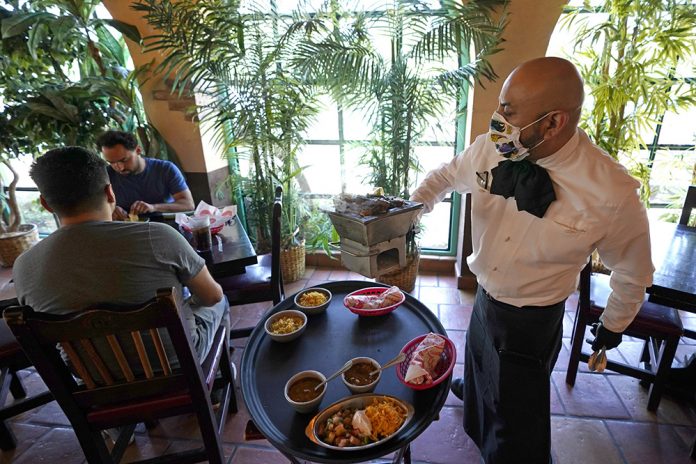

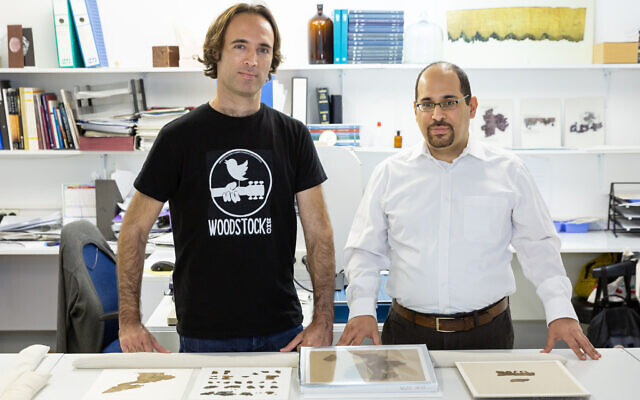
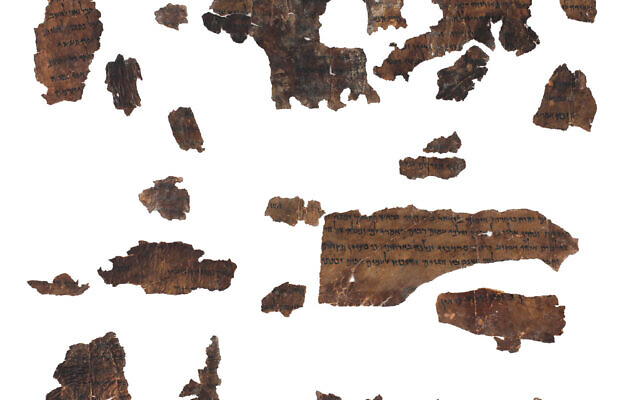
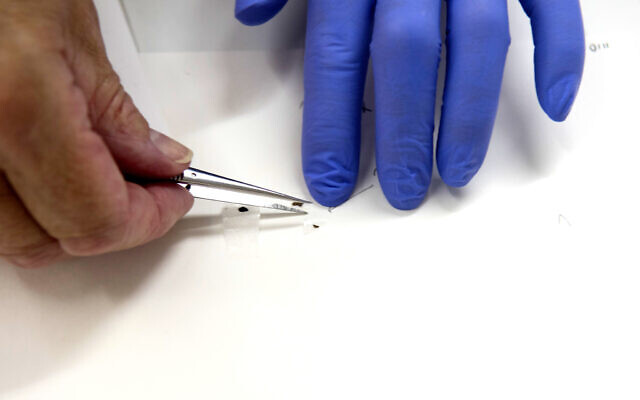
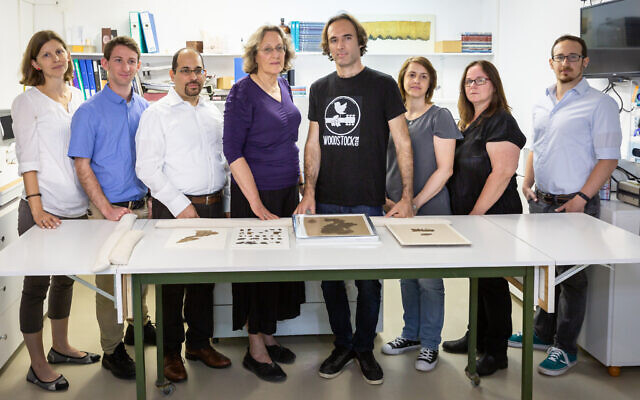
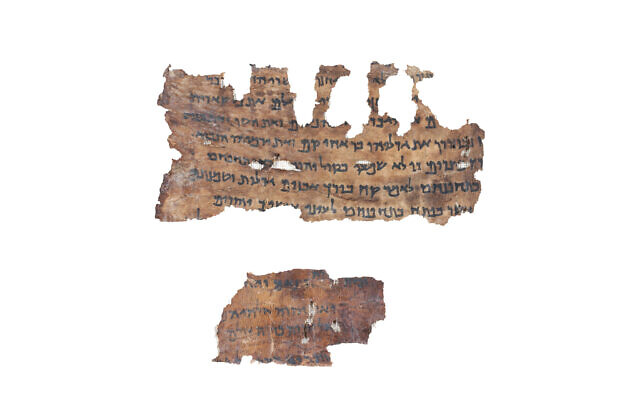
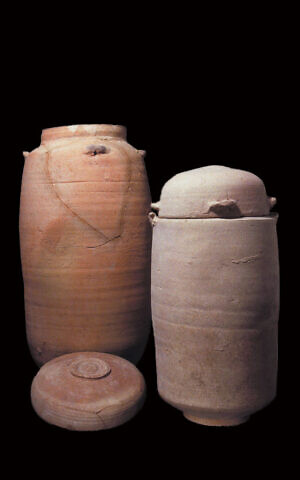
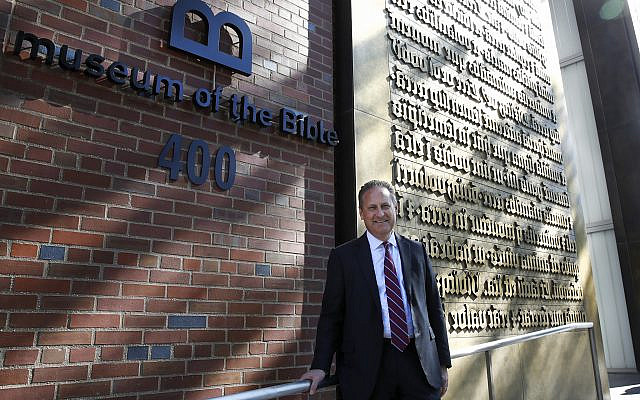
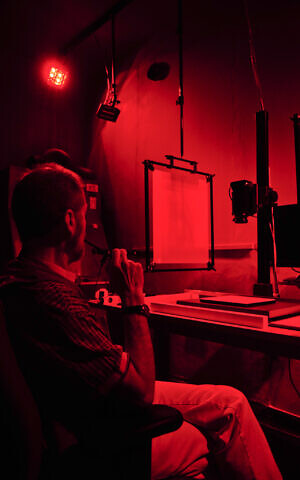
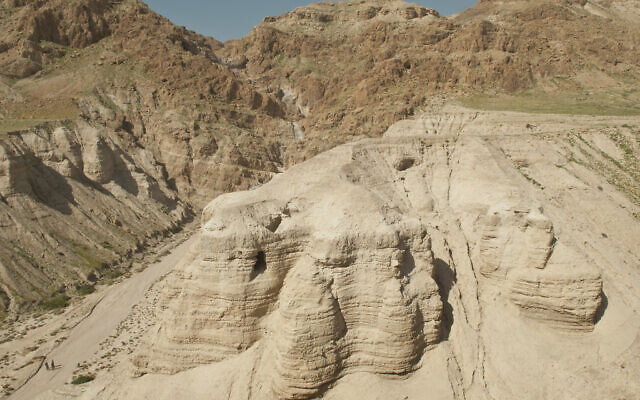
No comments:
Post a Comment